10 June 2022
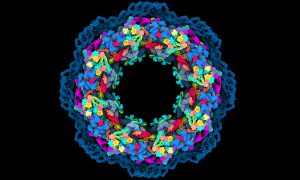
Scientists have solved several mysteries around the structure and function of a true molecular giant: the human nuclear pore complex. They created the most complete model of the complex thanks to combining the program AlphaFold2 with cryo-electron tomography, integrative modelling, molecular…
SCIENCE & TECHNOLOGY
2022
sciencescience-technology
21 December 2021
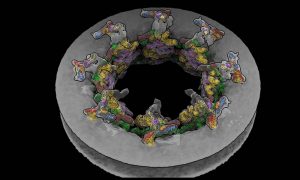
EMBL Hamburg’s Kosinski Group, the Beck Laboratory at the Max Planck Institute of Biophysics, and colleagues at EMBL Heidelberg recorded the nuclear pore complex contracting in living cells. They visualised the movement with an unprecedented level of detail with help of new software called…
SCIENCE & TECHNOLOGY
2021
sciencescience-technology
8 September 2021
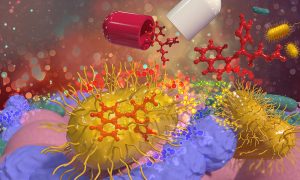
A new collaborative study led by EMBL group leaders Kiran Patil, Nassos Typas, and Peer Bork has found that common medications accumulate in human gut bacteria. This process reduces drug effectiveness and affects the metabolism of common gut microbes, thereby altering the gut microbiome.
SCIENCE & TECHNOLOGY
2021
sciencescience-technology
20 April 2021
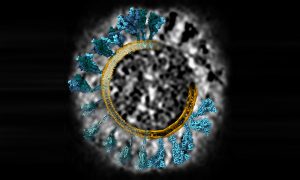
What does coronavirus’s spike protein look like in 3D? EMBL scientists and colleagues used cryo-electron tomography and molecular dynamics simulations to find out.
SCIENCE & TECHNOLOGY
2021
picture-of-the-weekscience-technology
3 September 2020
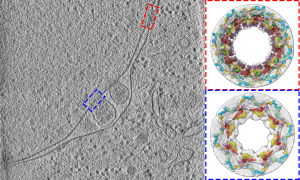
Scientists from the Beck group have studied the 3D structure of nuclear pores in budding yeast. They show how the architecture of the nuclear pore complex differs inside cells compared to its form observed in vitro studies.
SCIENCE & TECHNOLOGY
2020
sciencescience-technology
28 July 2020
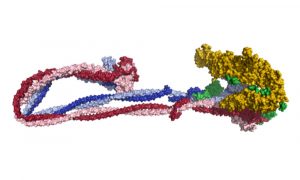
EMBL scientists and collaborators help reveal the process by which enormous quantities of DNA are folded into cells.
SCIENCE & TECHNOLOGY
2020
sciencescience-technology
25 April 2019
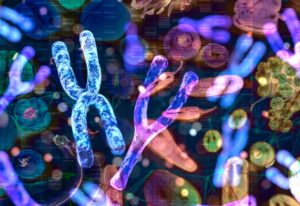
EMBL scientists have discovered that the proteome is substantially affected by both sex and diet
SCIENCE & TECHNOLOGY
2019
sciencescience-technology
29 June 2018
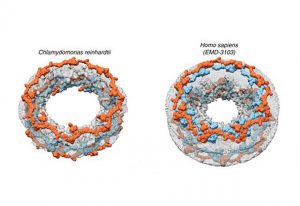
EMBL scientists reveal NPC architecture of algae
SCIENCE & TECHNOLOGY
2018
sciencescience-technology
15 February 2018
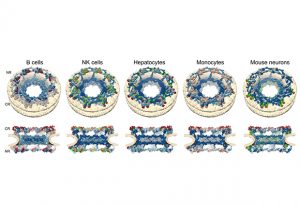
EMBL scientists create a turnover catalogue of almost 10.000 proteins from primary cells
SCIENCE & TECHNOLOGY
2018
sciencescience-technology
23 September 2016
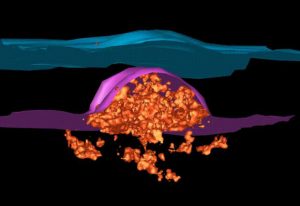
Puzzle of nuclear pore formation in growing nuclei solved
SCIENCE & TECHNOLOGY
2016
sciencescience-technology
10 August 2016

Storage of pre-made nuclear pores allows for rapid cell division in fruit fly embryos
SCIENCE & TECHNOLOGY
2016
sciencescience-technology
14 April 2016
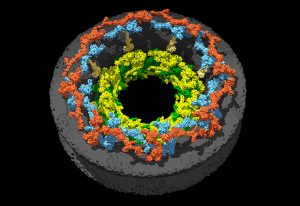
First detailed structural description of all the rings of nuclear pores
SCIENCE & TECHNOLOGY
2016
sciencescience-technology
23 September 2015

A nuclear pore riddle: how can you use the same number of pieces to form two rings that fit inside each other?
SCIENCE & TECHNOLOGY
2015
sciencescience-technology
17 September 2015
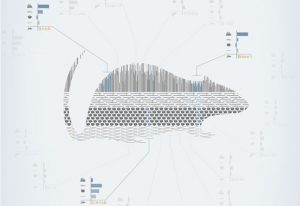
Multifaceted approach reveals how brain and liver age, helps explain why ageing brain loses plasticity.
SCIENCE & TECHNOLOGY
2015
sciencescience-technology













